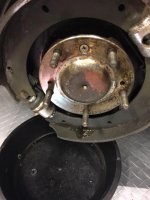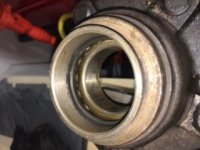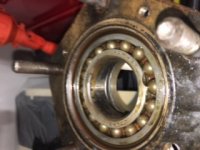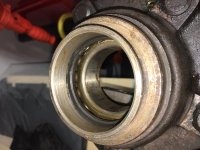Chet Zerlin
Jedi Trainee
Offline
Hello all,
Hadn't driving my 100-6 BN6 in a while and yesterday I found that the right rear brake was locked up tight. When I tried to loosen the brake adjuster it wouldn't move. Jacked up the rear and checked to see if a clogged brake line was the issue but when loosened brake fluid was not under pressure and flowed freely. So I put more muscle in the brake adjuster and it moved slightly - enough so that the wheel would turn. I noticed that moving the adjuster slightly in either direction would again lock up the brake. I was able to get the brake drum off and found fluid leaking (pic below).
This is my first time dealing with drum brakes (very familiar with disc brakes) so I wondered if anyone can give me some advice on what to do or check first before taking everything apart. Any suggestions or guidance would be greatly appreciated!
Thanks!
Chet
Hadn't driving my 100-6 BN6 in a while and yesterday I found that the right rear brake was locked up tight. When I tried to loosen the brake adjuster it wouldn't move. Jacked up the rear and checked to see if a clogged brake line was the issue but when loosened brake fluid was not under pressure and flowed freely. So I put more muscle in the brake adjuster and it moved slightly - enough so that the wheel would turn. I noticed that moving the adjuster slightly in either direction would again lock up the brake. I was able to get the brake drum off and found fluid leaking (pic below).
This is my first time dealing with drum brakes (very familiar with disc brakes) so I wondered if anyone can give me some advice on what to do or check first before taking everything apart. Any suggestions or guidance would be greatly appreciated!
Thanks!
Chet

 Hi Guest!
Hi Guest!

 smilie in place of the real @
smilie in place of the real @
 Pretty Please - add it to our Events forum(s) and add to the calendar! >>
Pretty Please - add it to our Events forum(s) and add to the calendar! >> 







